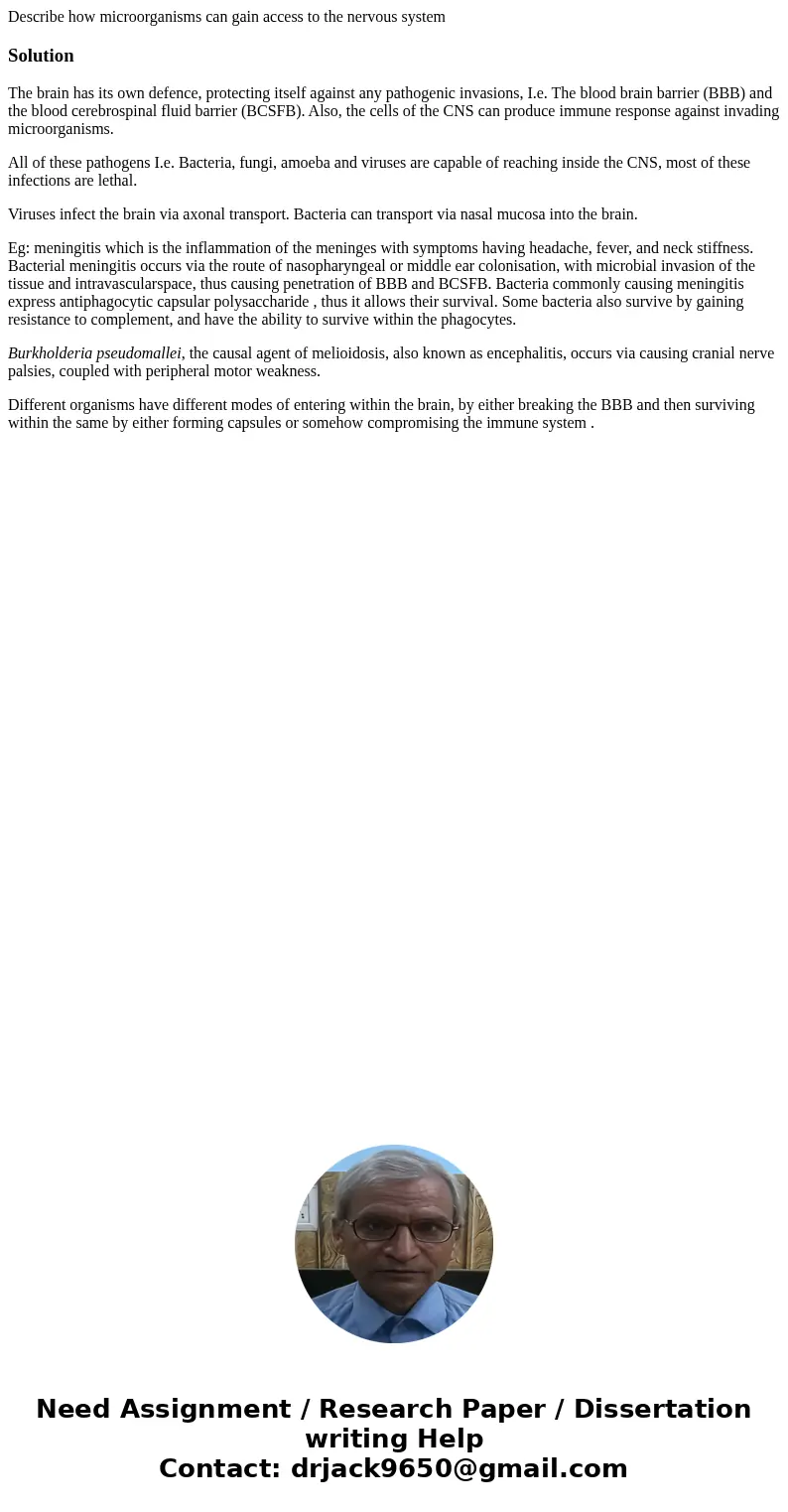Describe how microorganisms can gain access to the nervous s
Describe how microorganisms can gain access to the nervous system
Solution
The brain has its own defence, protecting itself against any pathogenic invasions, I.e. The blood brain barrier (BBB) and the blood cerebrospinal fluid barrier (BCSFB). Also, the cells of the CNS can produce immune response against invading microorganisms.
All of these pathogens I.e. Bacteria, fungi, amoeba and viruses are capable of reaching inside the CNS, most of these infections are lethal.
Viruses infect the brain via axonal transport. Bacteria can transport via nasal mucosa into the brain.
Eg: meningitis which is the inflammation of the meninges with symptoms having headache, fever, and neck stiffness. Bacterial meningitis occurs via the route of nasopharyngeal or middle ear colonisation, with microbial invasion of the tissue and intravascularspace, thus causing penetration of BBB and BCSFB. Bacteria commonly causing meningitis express antiphagocytic capsular polysaccharide , thus it allows their survival. Some bacteria also survive by gaining resistance to complement, and have the ability to survive within the phagocytes.
Burkholderia pseudomallei, the causal agent of melioidosis, also known as encephalitis, occurs via causing cranial nerve palsies, coupled with peripheral motor weakness.
Different organisms have different modes of entering within the brain, by either breaking the BBB and then surviving within the same by either forming capsules or somehow compromising the immune system .

 Homework Sourse
Homework Sourse